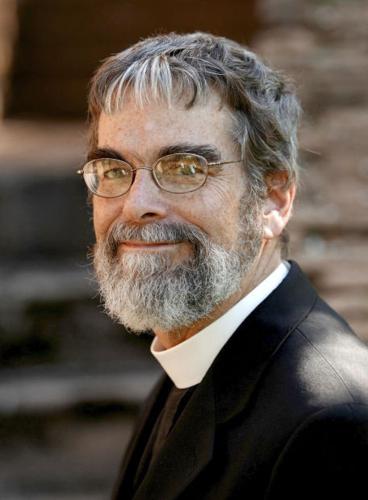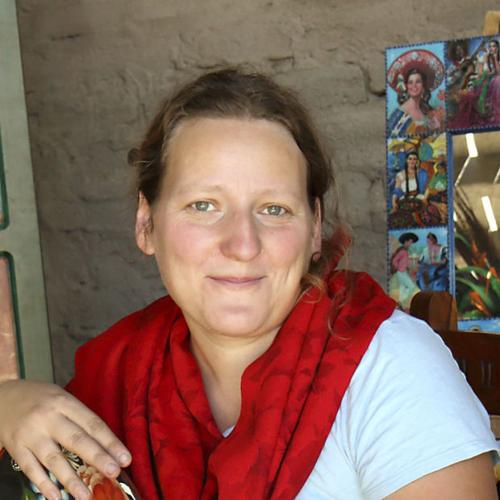The scientists who will lecture on “Life in the Universe” for the University of Arizona College of Science this year agree that life must exist in places other than Earth.
They remain uncertain about what form it might take, where it might be found and whether we will ever find it.
The unanswerable questions begin with the one posed for the opening lecturer Monday, Jan. 26: “What is Life?”
“It’s an impossible question and an implausible task,” said Brother Guy Consolmagno of the Vatican Observatory. “My goal is to remind people why the question is interesting.”
Consolmagno, whose ability to translate cutting-edge science to the general public earned him the Carl Sagan medal last year from the American Astronomical Society, said the answer has changed through history.
“At the time of Plato, it was that life is anything that moved.”
Another theory — the notion of some ineffable “life force” — persisted among scientists known as “vitalists” into the 20th century.
“The real mistake of the vitalists is that they wanted life to be an ingredient alongside carbon and water, as if the thing that makes life interesting is something you could lay on a scale or see under a microscope.
“Now we tend to go in the opposite direction and say life is mechanical,” Consolmagno said. “It’s this series of chemical reactions. In planetary exploration, we look for elements and molecules that are part of our particular recipe.
“The point is that there is something about life that gives us a value and an interest that has nothing to do with its mechanisms, nothing to do with its chemical reactions. Science can only study the mechanism,” he said.
And that mechanism might be vastly different elsewhere.
“I don’t think we’ll really know what life is until we find other examples of it elsewhere in the universe,” Consolmagno said.
Asteroid Man
The following lecture, by Dante Lauretta, seeks to answer how life might have started, or restarted, on Earth after it was sterilized in the apocalyptic period known as the “late, heavy bombardment” when, it is theorized, comets and asteroids hit the Earth in massive numbers.
Lauretta, a professor with the UA Lunar and Planetary Laboratory, studies meteorites and he leads OSIRIS-REx, a NASA space mission run by the UA that will retrieve a pristine sample of an asteroid from space.
Lauretta hopes that chunk of carbonaceous chondrite, called Bennu, contains the nucleic acids and amino acids that are the precursors of life.
Asteroids and comets are his choices for how Earth was reseeded with life’s precursors after its surface was cleansed in the bombardment. The other possibility is that some form of life had already developed on Earth and managed to find refuge, perhaps in a geothermal vent beneath the ocean.
“I’m talking about life as a natural byproduct of planet formation. I’m taking the one place where we know life exists and using that as an example.”
From there, he said, “we can start thinking about how often did that play out in the universe.”
The Earth’s processes, acting upon those seeded precursors, produced “that one thing 3.8 (billion) to 4 billion years ago that everything alive is related to,” he said. “Some amoeba swimming around a primordial ocean. How did that thing come to be?”
Lauretta’s talk will set the stage for the evolutionary biologists who follow.
Ultimately, over the course of millions of years, a short time in the history of the cosmos or our own solar system, we evolved as sentient beings and the pace of discovery picked up.
Did we get to this point by chance?
The biologists
Evolutionary biologist Brian Enquist will speak, according to the UA College of Science website, about the “regular and deterministic processes that shape the complexity and diversity of life.”
Anna Dornhaus follows Enquist with the task of explaining why life is so interesting.
You would think a biologist might have a better shot at defining life than a cosmologist, but a satisfactory definition escapes her as well.
Life is an amalgam of simple elements that developed complexity because of the interactions among our component parts, she said. Life evolved early in the history of our planet, she said, but human intelligence is “a fairly recent invention.”
How that happened, biologists don’t know, she said — and they are divided on whether its evolution was deterministic or accidental.
She can envision how it might have gone differently. Finding life elsewhere would illuminate that question, she said.
Looking for life
The following speakers will talk about where we’ve looked and where we go next.
The buzz in astronomy may be all about Earthlike exoplanets, but we’re not done looking for extraterrestrial life in our own solar system, said Tim Swindle, head of the UA’s Lunar and Planetary Laboratory.
Swindle heads a department that has participated in every planetary mission launched by NASA and is now directing its second one.
Forty years ago, we had already seen enough to know not to expect civilizations on the inner or outer planets. But have since collected tantalizing hints that life might exist or could have existed on the other planets and their satellites.
“I really don’t know if life exists, and that’s what makes for good science,” he said. “Certainly it’s not vast civilizations on Mars or those sorts of things people once imagined.”
Hints of life remain. “There is methane on Mars and water geysers on (Jupiter’s moon) Europa and hydrocarbons on (Saturn’s moon) Titan.”
“We’ve also learned about kinds of life (on Earth) we didn’t know about then — extremophiles that would do just fine in some of these locations.”
His personal choice for life or past life is Mars. “Mars is so Earthlike in so many ways.”
Beyond our solar system lies the possibility of planets that may have the same conditions in which life evolved here.
Whether we can find it is still a question, but astronomer Laird Close believes we can — and will, within the next few decades.
Close has spent the past decade devising technology to “see” those distant planets. He says we should be amazed at the pace of discovery.
As recently as 20 years ago, we had not found a planet outside our own solar system.
Now we know of thousands.
The discovered inventory indicates to astronomers that at least 20 percent of those billions upon billions of stars in our universe could host planets in the habitable or “Goldilocks” zone where conditions are just right for life.
So far, we merely know that exoplanets exist. Astronomers have used two measurements — the wobble they exert on their host stars and the light that diminishes when they pass in front of it — to compute their volume and mass.
What’s needed are spectroscopic measurements — light broken down into wavelengths that can reveal the presence of elements and the signs of atmospheres and oceans.
That requires better tools, Close said, specifically a space telescope capable of blocking light from a star to reveal planets around nearby stars that orbit in the habitable zone. These predicted Earth analogs with liquid oceans might contain the kind of life we would recognize.
It’s difficult to do from the ground, said Close, who has spent much of the last decade devising ways to image planets in visible light from a telescope in Chile that he and his team retrofitted with adaptive optics to produce the clearest images ever taken of exoplanets.
“Right now, we know almost nothing” about the planets that have been found, he said. There are closer targets, he said, and convincing evidence that multiple stars within 20 light-years of Earth could harbor habitable planets.
The series wraps up March 9, with Chris Impey, UA Distinguished Professor of astronomy and author of a series of popular science books, including the latest, “Beyond,” which explores space exploration.
He will talk about the potential for life existing elsewhere, the chances of finding it and the profound impact such a discovery would make.
“You’ve got these billion petri dishes out there with all the ingredients,” he said. “It would be extraordinarily unlikely if none of them happened to have life.”
There remains a “definition problem,” he said. Astorphysicists and biologists would be ecstatic to find “pond scum” somewhere, but the popular expectation is for intelligent life.
That search for intelligent life is really a search for the telltale signs of technology, he said. “We need to be a little more clever about looking for passive signs of energy usage or heat leakage.”
Impey said he is prepared to encounter questions about the encounters we’ve already had. “I hope to spend no more than three minutes debunking UFOs.”

















